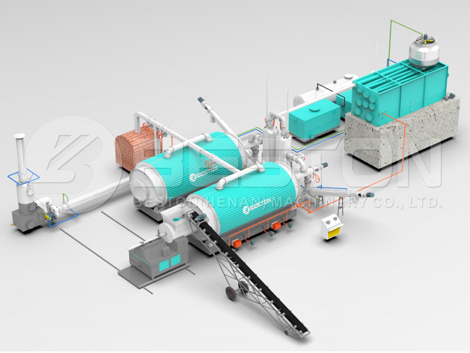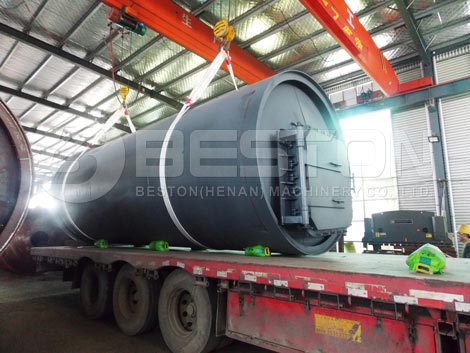There have been technological and engineering advances in all different industries over the decades, including the rubber industry. Nowadays you can find rubber products all over the place in homes and businesses around the world – think car tires, rubber gloves, erasers, bouncing balls, door seals and more. Unfortunately, however, while rubber is a versatile material with a wide range of applications, it’s lack of biodegradability means it is not great for the environment. In landfills, the materials can take centuries to degrade, and when it is sent to waste incineration plants, it produces lots of toxic gas.
In the not so recent past, the commercial viability of recovering any useful resources from different types of rubber waste was none existent. Fortunately, however, things have changed now that rubber pyrolysis plant technology has become more advanced and more affordable. With a pyrolysis machine, waste management facilities can covert all incoming conventionally non-recyclable rubber waste into useful end products without causing any damage to the environment.

Waste Rubber Pyrolysis Plant
Waste Rubber Pyrolysis Plant Working Processes
On arrival at a modern rubber recycling facility, waste rubber is ground into small, evenly sized particles with the help of automatic shredders and grinding machines. Then, if the waste rubber’s moisture content is high, the waste is put through drying systems prior to being transferred into the sealed pyrolysis reaction chamber. Inside the main reaction chamber, the waste rubber is heated to very high temperature and due to the absence of oxygen, begins to vaporize rather than burn. As the waste materials are vaporizing rather than burning, no toxic smoke is emitted. Consider the pyrolysis plant cost before investing.
The vapor from the rubber pyrolysis reaction chamber is funneled into a sophisticated water-cooling condensing system to be required into fuel oils of varying viscosities. The combustible gas generated during the pyrolysis process is typically used to reheat the reactor furnace.
The final products from tyre pyrolysis plant when scrap tires are fed into the reactor include carbon black, fuel oil, steel wire, and combustible gas. To make the heavy fuel oil more commercially valuable, it’s often processed using distillation machines to create diesel oil or gasoline. The carbon black can be sold directly to a range of industries, including the water treatment industry, chemical industry, metal refinement industry, and pharmaceutical industry. Alternatively, the carbon black can be converted into fuel briquettes using briquetting machinery.

Pyrolysis Plan To South Africa
Rubber Pyrolysis Plant Manufacturers
The number one manufacturer in the rubber pyrolysis plant industry is Beston Machinery. The company has exported tire pyrolysis machines to customers in dozens of countries around the world including China, South Africa, Brazil, South Korea, Turkey, Indonesia, Norway, France, the UK, Romania and more. With such a wide range of different pyrolysis plants for sale, including batch, fully continuous and semi-continuous models, it is no surprise that Beston is a globally renowned manufacturer in the industry. All plants from the company can be customized to meet the unique specifications of different buyers. Furthermore, the company offers great installation and operation technical support services.
If you want to learn about pyrolysis information, see tyre to oil plant.